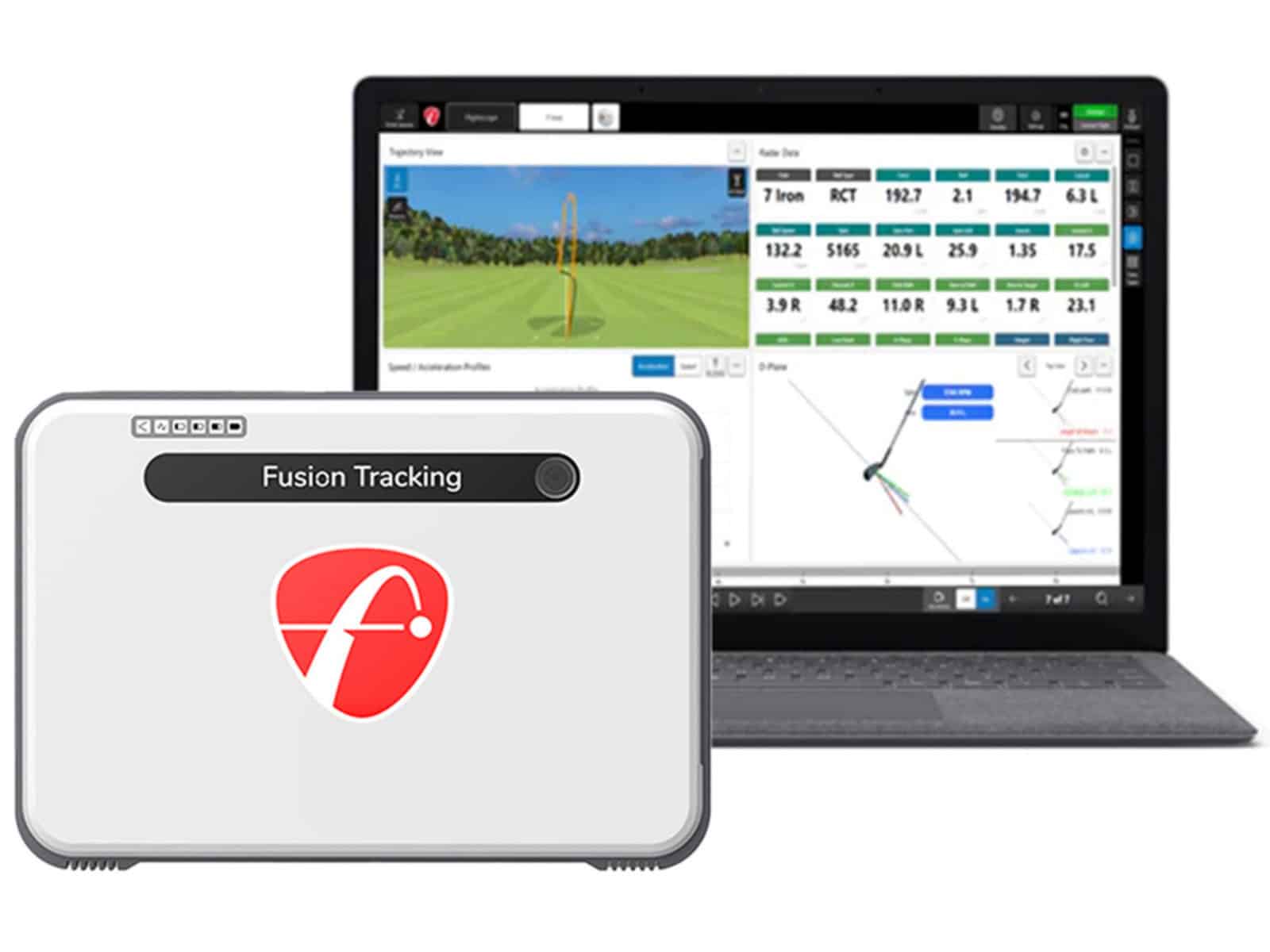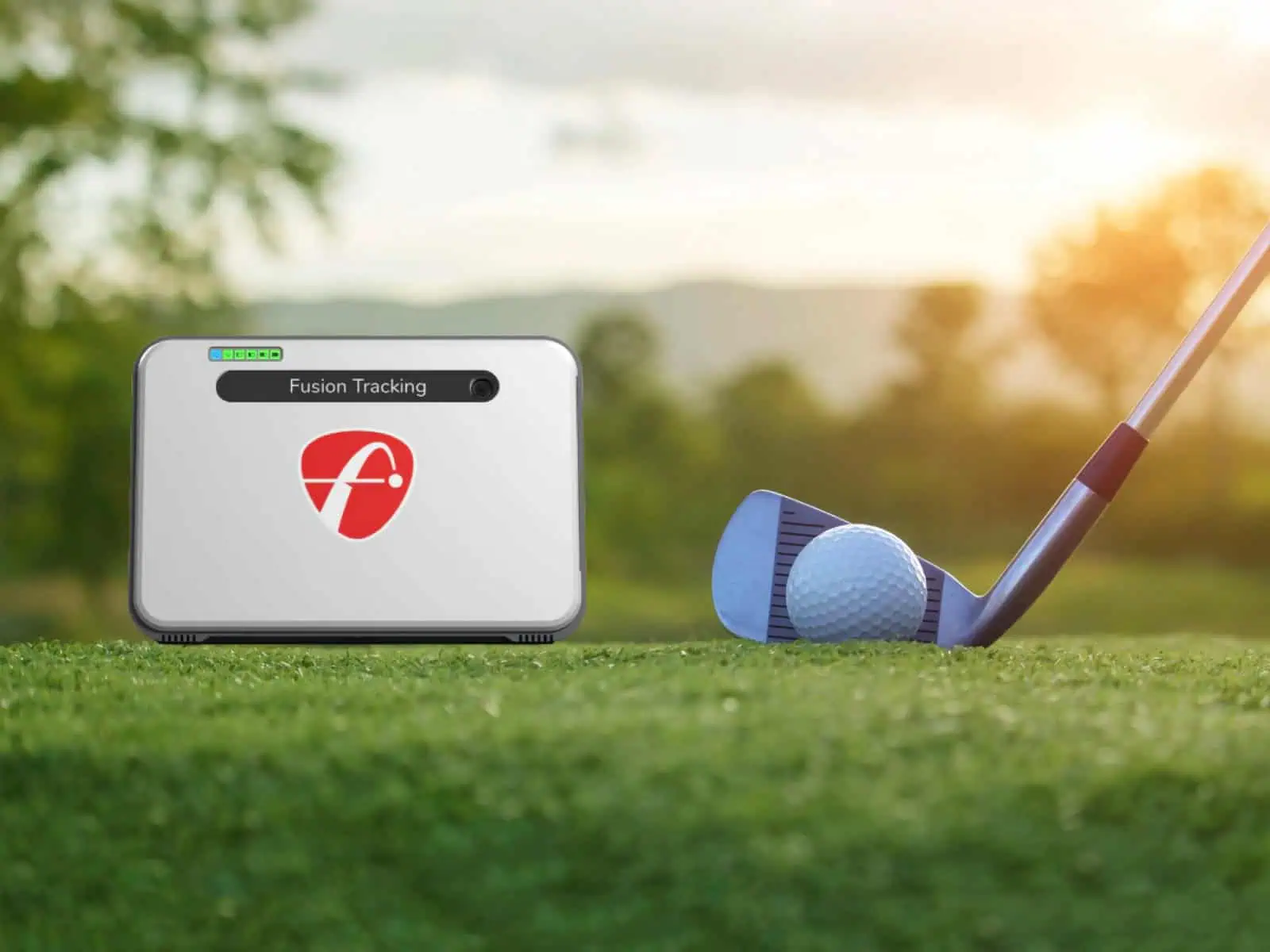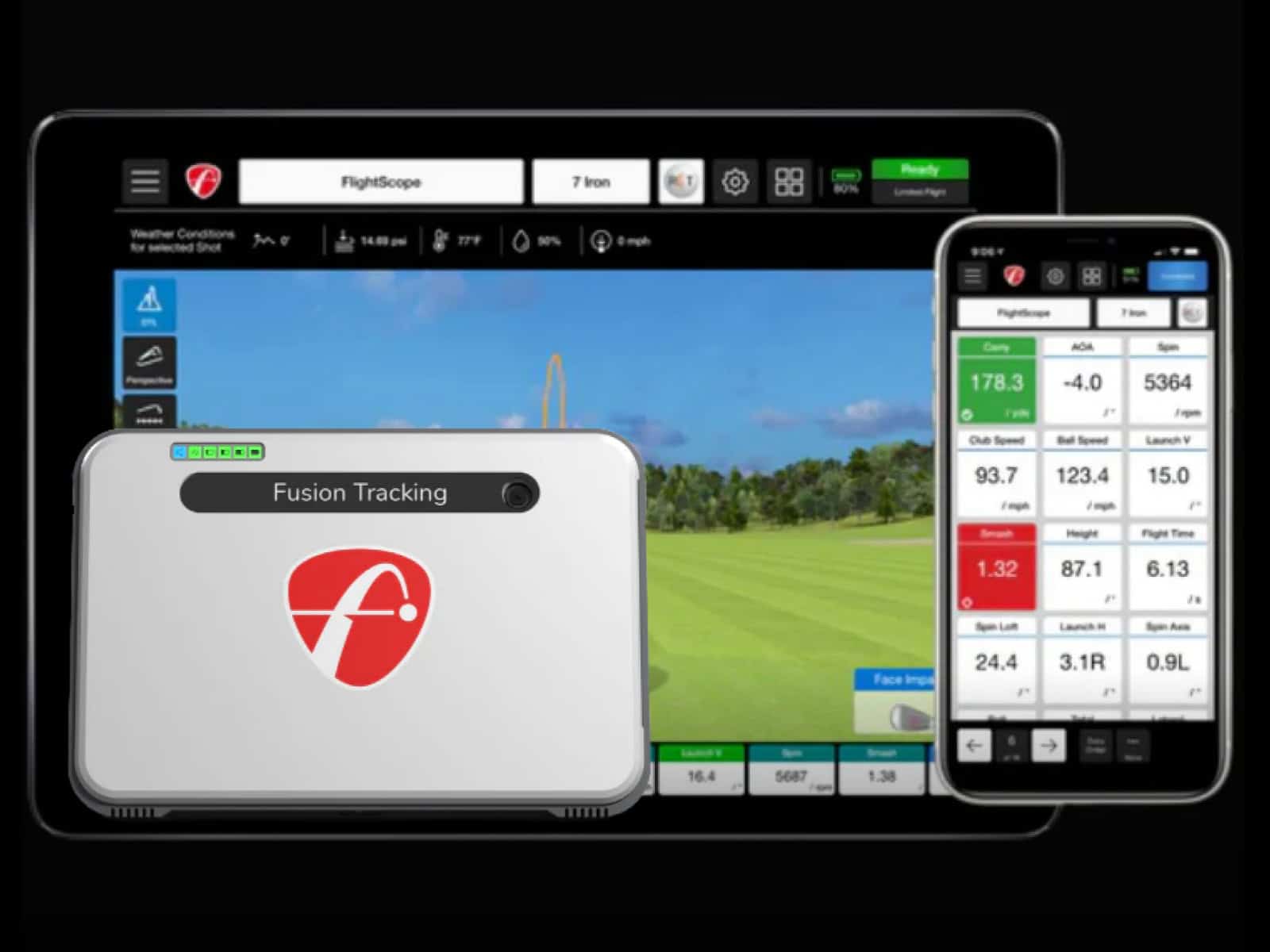In this detailed guide, you’ll get the FLightscope Mevo Plus’ full parameter list, clear labels on measured vs. modeled numbers and plain-English definitions for carry distance, smash factor, dynamic loft, club path, and face angle. You’ll also see what unlocks with the Pro Package and Face Impact.
By the end, you’ll know exactly which metrics to trust for setup, gapping and fixing curve, plus how to read the data fast so you swing with purpose.
Answer First: Complete Mevo+ Parameter List
You want numbers that tell the truth. FlightScope’s Mevo+ gives you both the basics and the deep cuts. Right out of the box, you get 20 standard ball metrics, the backbone of every shot you hit. Add the Pro Package and Face Impact, and you’ll unlock another 12 club metrics that tell the story of your swing from the ground up.
20 Standard Ball Metrics
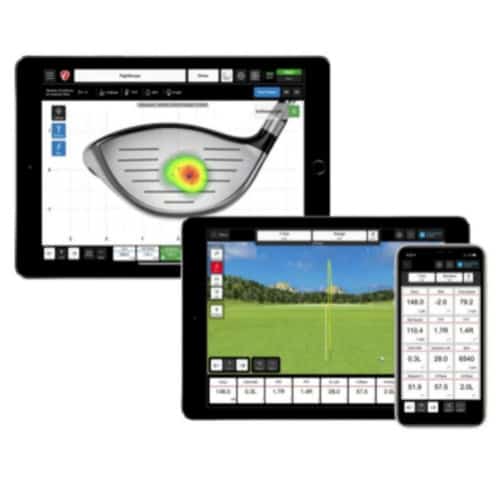
The Mevo+ captures every inch of the ball’s journey, from launch to landing:
- Ball speed – how hard you really flushed it.
- Vertical launch angle (VLA) and Horizontal launch angle (HLA) – where the ball takes off vertically and horizontally.
- Spin rate and spin axis – the heartbeat of your shot’s curve.
- Carry distance, total distance and roll distance – how far it flies, then runs.
- Apex height, peak apex yardage and flight time – your ball’s climb and hang time.
- Lateral landing and vertical descent angle – where and how steep it comes down.
- Smash factor – a simple efficiency check (ball speed ÷ club speed).
- Shot dispersion, curve and shot type – how tightly you’re grouping shots and which way they bend.
- Launch direction offset, landing side summary and session dispersion summary – fine-grained accuracy insights over a session.
These twenty pieces of data are your core flight analytics, showing how the ball behaves through impact and in the air.
12 Pro Package and Face Impact Club Metrics
When you add the upgrades, the Mevo+ digs deeper into your swing mechanics:
- Club speed, club path and face angle (face to target) – a clear view of where your club travels and points at impact.
- Face to path, angle of attack (AoA) and dynamic loft – how your strike creates launch and spin.
- Vertical and horizontal swing planes – your swing’s 3D motion.
- Low point – where the club bottoms out.
- Club speed profile and club acceleration profile – tempo and transition captured in data form.
- Impact location (Face Impact) – heel, toe or dead-center contact visualized.
Each number connects to the next like puzzle pieces: ball data showing results, club data showing cause. Once you see them together, you start thinking less about guessing and more about adjusting.
What’s Measured vs. What’s Calculated on the Mevo+?
You can’t fix what you don’t understand. Knowing which numbers the Mevo+ truly measures versus what it models changes how you trust your data. It’s the difference between seeing reality and seeing an estimate dressed up as fact.
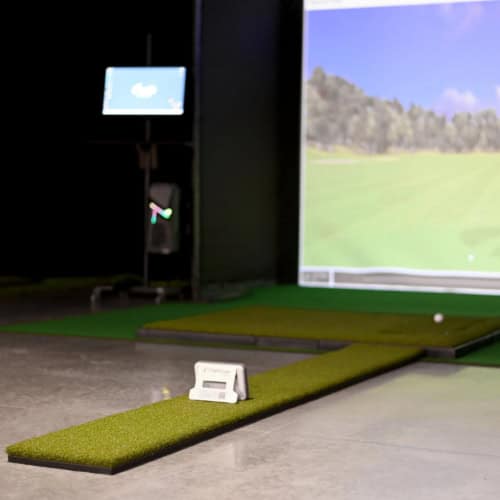
Measured Directly by Radar
The Mevo+ uses a multi-receiver Doppler array to track the ball and club through impact. It directly measures:
- Ball speed – the raw burst of energy off the face.
- Vertical launch angle (VLA) – how high the ball starts.
- Horizontal launch angle (HLA) – the start direction left or right.
- Spin rate – measured revolutions, not a computer’s best guess.
- Spin axis – the ball’s tilt that decides draw or fade shape.
- Club speed and angle of attack (AoA) – traced from radar reflections off the clubhead near impact.
These readings are your hard evidence. Each one is radar-born, captured in real time from moving objects, not filled in later by software.
If you’re comparing radar-based systems, the FlightScope Mevo+ vs Full Swing KIT comparison highlights key differences in radar precision, measured data points, and pricing tiers.
Calculated or Modeled from Measured Inputs
Everything after the moment of impact becomes a story built from physics. The Mevo+ models how the ball would behave once it leaves the radar’s short-range tracking window. It calculates the following:
- Carry distance, total distance and roll distance – based on partial flight data, spin, and launch conditions.
- Apex height, flight time and lateral landing – all simulated through the Mevo+’s flight model.
- Vertical descent angle – geometry built from trajectory math.
- Smash factor – a ratio (ball speed ÷ club speed), not a separate reading.
- Spin loft – derived from the equation (dynamic loft − AoA).
Spin loft is a perfect example of the gray zone between measured and modeled. The radar doesn’t see loft directly; it infers it through how the club and ball interact, using a collision model that stitches real data together.
It’s tempting to treat every number on the screen as gospel. But when you know which are measured and which are modeled, you’ll start reading your Mevo+ like a pro: trusting the raw data, questioning the rest, and learning to tell the difference before your next swing.
Standard Ball Metrics
Every shot starts with the ball. What the Mevo+ measures tells you how the strike behaved and why it flew the way it did. These 20 standard metrics explain your contact, trajectory and consistency.
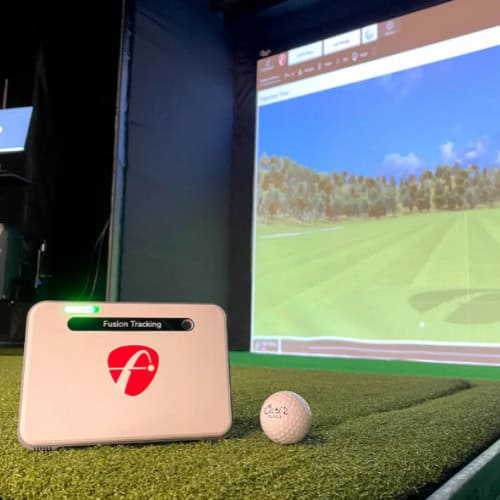
Launch & Speed
Ball speed is the raw power off the face; the faster it leaves, the farther it goes.
Vertical launch angle (VLA) shows how high the ball starts; too high, and you lose carry; too low, and it can’t stay airborne.
Horizontal launch angle (HLA), or launch direction, tells you where the shot started relative to your target line.
Smash factor compares ball speed to club speed. A higher ratio means you’re finding the center of the face and transferring energy efficiently.
Spin Characteristics
Spin rate measures how many revolutions per minute the ball makes after impact. It controls lift, shape and stopping power.
Spin axis defines tilt, the invisible hinge that makes the ball draw, fade or curve off line. Positive tilt spins the ball left; negative spins it right.
Flight Shape & Height
Apex height marks the top of your ball’s flight, while peak apex yardage shows how far downrange that peak occurs.
Flight time is exactly what it sounds like: the seconds between impact and landing.
Curve describes the amount of side movement in the air.
Shot type tags the ball’s shape: draw, fade, hook, or slice. Those labels help you spot patterns fast.
Distance & Landing Outcomes
Carry distance measures how far the ball travels before hitting the ground.
Total distance adds roll-out after landing.
Roll distance isolates that ground portion alone.
Vertical descent angle shows how steeply the ball falls; steeper angles stop faster on greens.
Lateral landing captures how far left or right the ball finishes from your target.
Landing side (L/R) summary compiles that tendency across shots, revealing your directional bias.
Accuracy & Consistency
Shot dispersion shows how tightly your balls group; think of it as your personal “shotgun pattern.”
Session dispersion summary gives a bird’s-eye view of your consistency over time.
Launch direction offset, sometimes called start-line error, measures how far offline the ball leaves the clubface.
Advanced Club Metrics via Pro Package & Face Impact
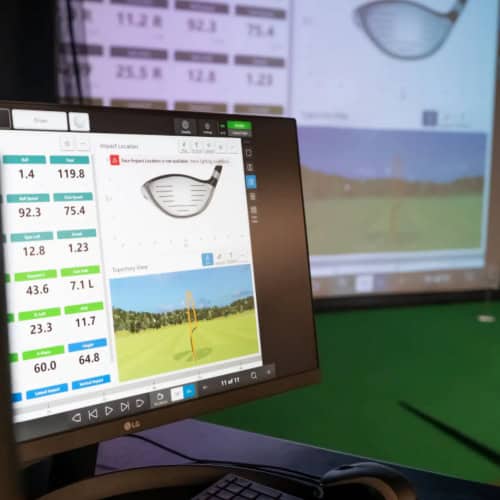
The Pro Package and Face Impact upgrades turn the Mevo+ from a ball tracker into a full swing diagnostic tool. They reveal what the club was doing just before, during and after impact, where all the real magic (or trouble) happens.
Club speed is the velocity of the clubhead at the moment it strikes the ball. Higher isn’t always better; the key is controlled speed through impact.
Club path shows whether the head travels in-to-out or out-to-in relative to the target line. That small difference separates a push-draw from a pull-fade.
Face angle (face to target) measures where the clubface points at impact. Combine that with club path and you can predict your shot shape before the ball lands.
Face to path is the gap between those two lines. A closed face to path draws the ball; an open one fades it. This number often tells you more than the ball flight itself.
Angle of attack (AoA) defines whether the club is moving up or down at impact. Drivers like a positive AoA; irons prefer a shallow negative. Getting this right changes everything from launch height to spin.
Dynamic loft shows the actual loft at impact, not what’s stamped on the club. Shaft lean, ball position and hand placement all change it (and with it, launch and spin).
Vertical swing plane describes the up-and-down arc of your motion. Too steep, and you dig; too shallow, and you’ll thin it.
Horizontal swing plane adds the side-to-side motion, mapping how your swing moves across the target line. Together, these two planes outline your 3D swing path like a radar signature.
Low point marks where your club bottoms out. For clean contact, that low point should sit just ahead of the ball with irons and behind it for a driver.
Club speed profile traces how velocity builds through impact. You can see if you’re accelerating or decelerating into the ball.
Club acceleration profile goes a step deeper: how quickly that speed changes, showing tempo and rhythm in hard numbers.
Finally, impact location (Face Impact) tells you exactly where on the face you made contact: heel, toe or center. Few feelings compare to watching a center strike light up perfectly on the heat map.
Indoor Use & Spin Capture Notes (Essentials Only)
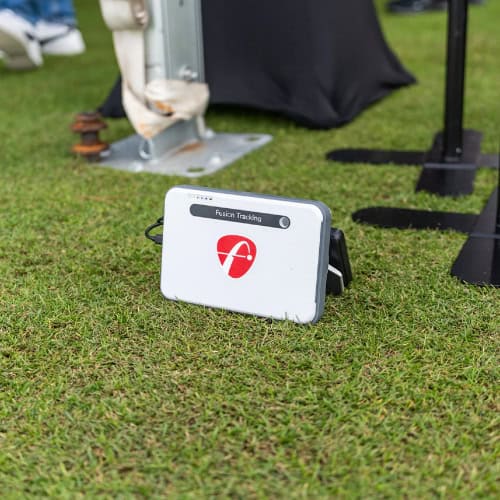
Golf indoors changes the radar game. The Mevo+ can’t see the entire flight, so it relies on the first few feet of ball movement—and that’s where metallic dots earn their keep.
Attach a small dot to the ball’s surface. That shiny patch gives the radar something to reflect, helping it track spin rate and spin axis with much higher accuracy. Without it, you risk losing spin readings or seeing the wrong curvature entirely.
Still, not every shot gives clean data. Low-spin wedges or mishits can confuse the radar because the ball isn’t spinning fast enough to create a readable signal. When that happens, the Mevo+ falls back on its model and estimates spin and axis based on launch direction, club data and flight algorithms. You’ll notice when this happens: the curve or distance won’t match what your eyes expect.
Indoor setups also demand space discipline. Too close to the screen or net and the radar can’t build enough track time to read spin. Too far back and reflections can distort the return signal. Stick to FlightScope’s recommended spacing and use level alignment with the hitting mat. A fraction off can mean a dozen yards wrong.
Once you get the setup right, you’ll see the dots work their magic. Clean spin numbers, true axis readings, and a ball flight model that mirrors reality—even in your garage.
Frequently Asked Questions
Every golfer using the FlightScope Mevo Plus eventually has a few questions that go beyond the manual. The following answers cover the finer details that help you get the most out of your radar setup.
Do metallic dots materially improve indoor spin-axis accuracy?
Yes. Those tiny dots give the radar something solid to reflect, helping it lock onto the ball’s rotation. Without them, the Mevo Plus may miss spin readings or misjudge curvature, especially on shorter indoor shots.
What happens if the Mevo Plus can’t resolve spin on a mishit?
When the radar loses clean spin data, it switches to estimation mode. The system blends club data and launch direction to fill in the gaps. You’ll still get a number, but it may not perfectly match what really happened.
Does Face Impact change any ball numbers?
No. Face Impact is a visual add-on. It tracks where you struck the clubface: heel, toe or center, but it doesn’t alter carry distance, spin rate or launch readings.
Is dynamic loft directly measured by the Mevo Plus?
No. The unit calculates it using a collision model. It looks at how the club and ball interact at impact. Then it subtracts angle of attack from that model to estimate spin loft, the number that dictates how much spin you create.
Why might spin-axis sign look “flipped” on some toe or heel strikes?
Off-center hits twist the clubface differently, creating gear-effect spin. The radar reads that motion, but firmware or backup logic can occasionally reverse the axis direction. It’s not an error in physics, just how data validation interprets certain impacts.
Are carry and total distance fully measured outdoors?
No. The Mevo Plus tracks partial flight, then uses algorithms to model the rest. Its radar sees the launch and the first part of the arc, then projects roll and landing based on spin, launch and ball speed.
How many receive antennas does the Mevo Plus use, and why does it matter?
Four. The multi-receiver Doppler system measures microsecond timing differences between antennas to calculate precise angles and spin axis. That’s what gives the Mevo Plus its edge; more antennas mean more accurate tracking, even in complex ball flights.
Can the Mevo Plus be used for putting practice?
Yes, though results vary. The radar can measure launch speed and direction on putts, but extremely low ball speeds limit accuracy. It’s best used for tempo and distance control rather than full putting analysis.
Does the weather or temperature affect readings outdoors?
Absolutely. Humidity, air density and wind can slightly influence carry and spin results. The Mevo Plus uses internal sensors to compensate, but calibrating with local weather data ensures tighter consistency.
Can the Mevo Plus data integrate with swing video?
Yes. Through the FlightScope app, each shot’s data can sync with recorded swing video, letting you see numbers and motion side by side. It’s a powerful way to connect feel with fact.
Final Thoughts
Every number the Mevo+ gives you tells a part of your swing’s story. The radar measures the essentials: ball speed, launch angles, spin rate, and spin axis. It also picks up clear club data like club speed and angle of attack. From there, software takes those hard facts and models what happens through flight and roll.
Once you add the Pro Package and Face Impact, the picture sharpens. You’ll see where your club traveled, how the face met the ball and where contact landed on the face.
Data can’t make the swing for you, but it shows the truth behind every strike. Use it, trust it and let the radar prove what your eyes might miss—the numbers don’t lie.
If you’re considering a more affordable option in the same family, the FlightScope Mevo Gen 2 review covers its updated radar technology, accuracy improvements, and app features compared to the Mevo+.
Thanks for reading!


